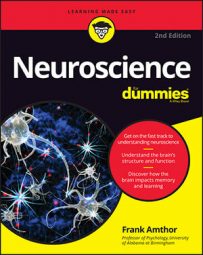Symptoms of schizophrenia typically appear in young adulthood, and they fall into two general categories:
- Positive symptoms mean active behaviors or processes such as hearing voices or trying to escape imagined people following the sufferer. These voices sometimes command sufferers to commit inappropriate acts and are associated with paranoia and delusional beliefs.
Brain scans of schizophrenics during such auditory hallucinations show activity in their auditory cortex, suggesting that some internal source in the brain is generating activity in auditory areas that the schizophrenic cannot distinguish from actual hearing.
- Negative symptoms refer mostly to withdrawal and failure to engage in social interaction. Negative symptoms include flat affect and emotion, loss of motivation, social withdrawal, anhedonia (the inability to experience pleasure), and lack of attention to hygiene and routine activities of life. These are often accompanied by cognitive decline.
The genetic basis for schizophrenia
Because of the typical age of onset — young adulthood, the time when myelination in the frontal lobe is completed (the last major stage of axonal myelination during development; refer to Chapter 16) — schizophrenia is typically thought of as a frontal lobe disease that, due to its heritability, has a strong genetic and, therefore, organic basis.One fact arguing for the genetic basis of schizophrenia is the fact that, if one identical twin has schizophrenia, the other has a 40 percent to 50 percent chance of developing the illness, even when identical twins are raised separately. If schizophrenia were due to random environmental effects, then the chance of both identical twins having it would be far less than 1 percent.
On the other hand, if schizophrenia is genetic in origin, it is unclear why the concordance rate (chance of having it if a close relative such as an identical twin does) is only 50 percent and not 100 percent. This has led some scientists to postulate the necessity of an environmental trigger that acts on a genetic susceptibility. No one has any good idea what this trigger may be.Treatment options
Pharmacological treatments for schizophrenia have enormously improved the lives of some sufferers in the last decades. This is particularly the case for alleviation of positive symptoms, which are generally the most difficult to manage. For unknown reasons, negative symptoms do not respond well to most current medications.Most schizophrenics are treated with antipsychotic medications such as clozapine, quetiapine, risperidone, and perphenazine. What's not clear is why some of these agents work better in some patients than others for positive symptoms, and why none of them really work well with respect to negative symptoms. The prescription issue is complicated by the fact that several of these drugs have serious side effects. Interestingly, among the drugs that alleviate some symptoms are agents that increase acetylcholine levels in the brain. Nicotine, as from cigarettes, is a nicotinic agonist, and cigarette smoking, perhaps as a form of self-medication, is highly prevalent among schizophrenics.

